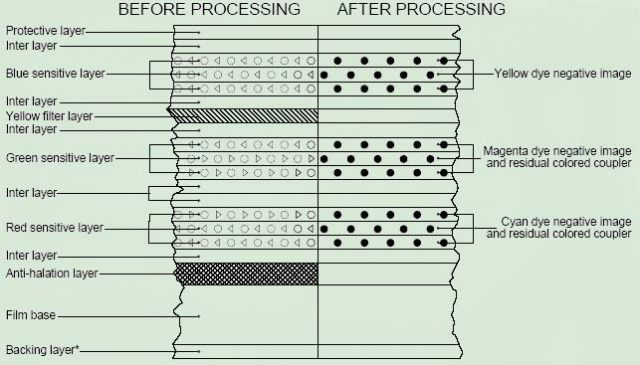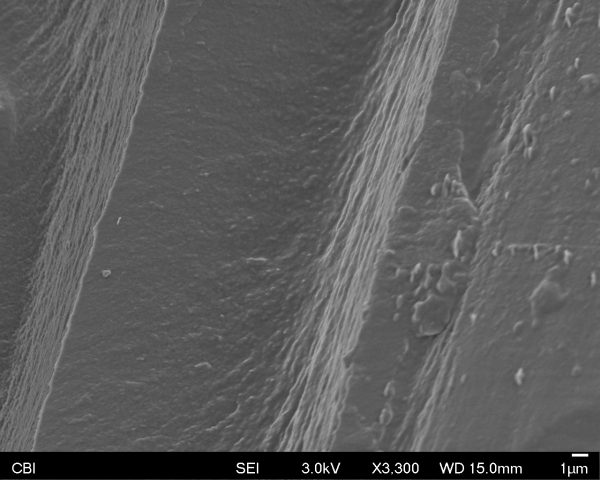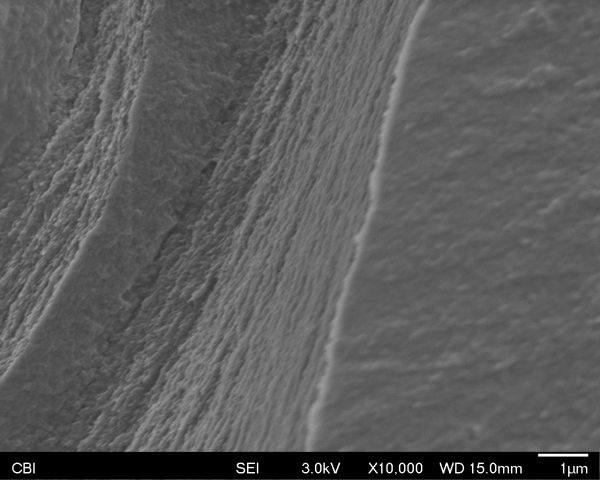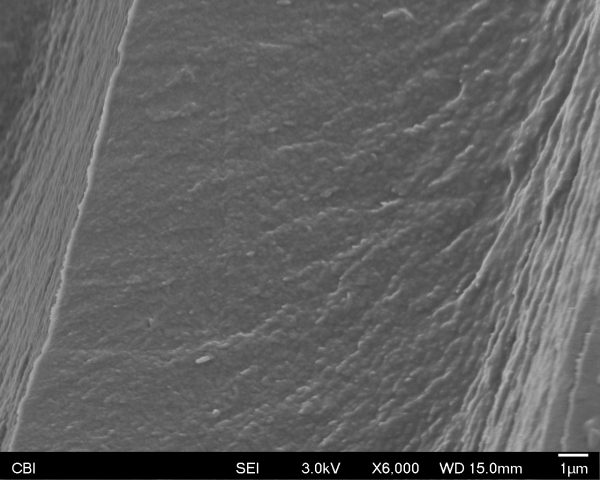Color film is made in layers of emulsions and filters. One way to think about it is three layers of black and white film that are in layers, and each layer is sensitive to different color channels. Usually, 3 layers: yellow, magenta, and cyan on the film base, but some films have as much as 12 – and the Ferraria revival project is making a color film with 16 layers.

I was never quite satisfied with diagrams like the above. Film isn’t that thick! What’s really going on? To photograph the actual silver halide sensitive-to-light grains, one would need to strip the protective layers off the top with chemical baths. I couldn’t do this, but examined film anyway to see what I would end up with.

On the left, you can see the metal slug. To the right of that, you can see a bit of the copper tape, and the solver contact in the bottom left corner. The sheet that takes up more than half of the frame, on the right, is the film. Little bits of what is most likely dust on top of the smooth layer. The edge is where the action is however.

A close up of the edge shows us distinct “shelves”, the different layers of the film, certainly!

Each of these layers has an interesting amount of texture to them. Perhaps from the crystalline inner structure. Below shows an even closer look.

Ultimately the inner dynamics of film are no more revealed to me than they were before, but seeing it for myself – in real life – is far more reassuring and gratifying than through diagrams or drawings.